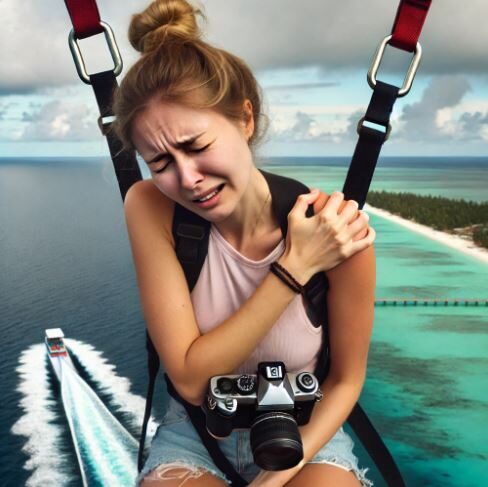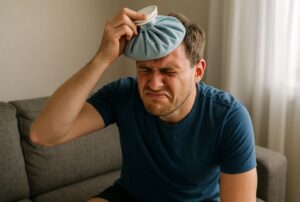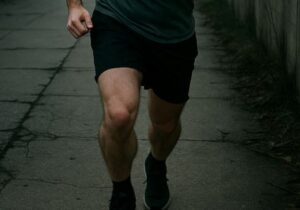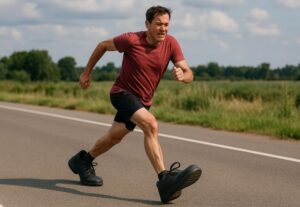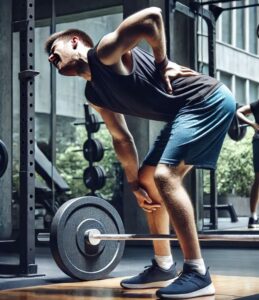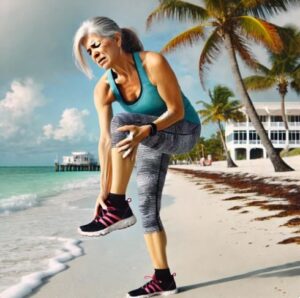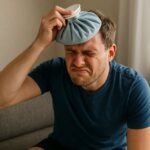Share this post
Dr. Jason Pirozzolo Discusses Potential Injuries from Parasailing
A 30-year-old tour photographer had the perfect vantage point high above the Gulf of America, capturing stunning aerial shots while parasailing. However, what was supposed to be an exhilarating workday turned into a painful ordeal when an abrupt pull from the harness caused a shoulder labral tear. This type of injury is more common than many realize, especially among individuals engaging in high-impact sports or activities that involve sudden jerking motions. Dr. Jason Pirozzolo, an expert in sports medicine and orthopedic care, provides key insights into the risks, symptoms, and best treatment options for labral tears.
What is a Shoulder Labral Tear?
The labrum is a ring of cartilage that surrounds the glenoid cavity of the shoulder blade, helping to stabilize the ball-and-socket joint. When a forceful movement, such as a sudden pull from a parasailing harness, occurs, it can partially or completely tear the labrum.
“Labral tears can result from repetitive overhead activities or acute trauma,” explains Dr. Jason Pirozzolo. “This type of injury often leads to pain, instability, and decreased range of motion. If untreated, it can significantly impair daily activities and athletic performance.”
How Did This Injury Happen?
The photographer’s injury occurred due to the unexpected force from the parasailing harness. While ascending, a sudden gust of wind caused an abrupt shift, yanking her shoulder in an unnatural position. This rapid movement created a torque effect, leading to a tear in the labral tissue.
“Anytime the shoulder experiences a rapid, high-impact force, the risk of labral damage increases,” says Dr. Jason Pirozzolo. “Athletes, adventure sports enthusiasts, and even individuals lifting heavy objects incorrectly can suffer from similar injuries.”
Common Symptoms of a Shoulder Labral Tear
A labral tear often presents with symptoms that worsen over time. Dr. Jason Pirozzolo emphasizes that recognizing these signs early can lead to better outcomes:
- Deep shoulder pain that worsens with movement
- Clicking or popping sensations when rotating the arm
- Weakness or instability in the shoulder joint
- Reduced range of motion, making daily tasks challenging
- Pain during overhead activities such as lifting or reaching
If these symptoms persist for more than a few weeks, seeking medical evaluation is crucial to prevent further complications.
Diagnosis: How Do Doctors Confirm a Labral Tear?
A shoulder labral tear requires a detailed evaluation for an accurate diagnosis. Dr. Jason Pirozzolo outlines the most effective diagnostic tools:
- Physical Examination – Doctors assess range of motion, strength, and stability by moving the arm in specific directions.
- MRI with Contrast (MR Arthrogram) – This imaging technique provides a clearer view of soft tissue damage.
- CT Scan (for complex cases) – Occasionally used to assess bony structures affected by the injury.
“Proper imaging helps determine the severity of the tear and whether surgery is necessary,” says Dr. Pirozzolo.
Treatment Options for Shoulder Labral Tears
The best treatment approach depends on the severity of the tear, the patient’s activity level, and their recovery goals. Dr. Jason Pirozzolo explains the most common treatment pathways:
Non-Surgical Treatments: The First Line of Defense
For mild to moderate tears, a conservative approach often leads to recovery:
- Rest and Activity Modification – Avoid pain-inducing movements to allow healing.
- Physical Therapy – Strengthening the rotator cuff and stabilizing muscles improves function.
- Anti-Inflammatory Medications – NSAIDs like ibuprofen help reduce pain and swelling.
- Corticosteroid Injections – In some cases, targeted injections provide temporary relief.
“Physical therapy is key,” notes Dr. Jason Pirozzolo. “Strengthening the muscles around the shoulder joint enhances stability and prevents future injuries.”
When is Surgery Necessary?
If the tear is severe, or if non-surgical methods fail, arthroscopic surgery may be required. This minimally invasive procedure allows surgeons to repair or remove damaged cartilage using small incisions.
“Surgical repair is often recommended for active individuals or athletes,” says Dr. Pirozzolo. “The goal is to restore shoulder function and prevent long-term instability.”
Recovery and Rehabilitation
Healing from a labral tear takes several weeks to months, depending on the treatment approach. Dr. Jason Pirozzolo outlines the typical recovery timeline:
- Initial Healing Phase (0-6 weeks) – Patients focus on pain management, gentle mobility exercises, and avoiding overhead movements.
- Strengthening Phase (6-12 weeks) – Gradual introduction of resistance training to rebuild stability.
- Advanced Recovery (3-6 months) – Patients regain full range of motion, endurance, and return to activities.
“A well-structured rehab program is essential for a full recovery,” emphasizes Dr. Pirozzolo. “Rushing back too soon increases the risk of re-injury.”
Preventing Shoulder Injuries During Parasailing and Watersports
To reduce the risk of labral tears, Dr. Jason Pirozzolo recommends taking these precautions before engaging in activities like parasailing:
- Properly Adjust the Harness – Ensure a secure but not overly tight fit.
- Warm-Up Before Activity – Light shoulder stretches and mobility drills prevent stiffness.
- Strengthen Shoulder Muscles – Incorporate rotator cuff exercises into your fitness routine.
- Be Aware of Sudden Movements – Prepare for unexpected shifts in wind or turbulence.
“A strong, flexible shoulder is less likely to suffer injury,” says Dr. Jason Pirozzolo. “Prevention is always better than treatment.”
Final Thoughts
For this tour photographer, a routine parasailing excursion turned into a painful setback. Fortunately, with the right treatment plan, she can make a full recovery and return to her active lifestyle.
Dr. Jason Pirozzolo urges anyone experiencing shoulder pain to seek medical advice early. “Prompt evaluation and personalized treatment prevent long-term damage and ensure the best possible recovery.”
For expert advice on sports injuries, recovery strategies, and cutting-edge treatments, follow Dr. Jason Pirozzolo for insights into the latest developments in sports medicine. You may also visit a Key West orthopedic clinic for more information.
Disclaimer: The scenario is based on true events; however, names, locations, and details have been altered to protect privacy.

